Kayak sails can help you travel faster while expending less energy. But for paddlers or pedalers, relying on the breeze for a boost opens up a whole new world of rigging possibilities. Want to harness the power of the wind? Here’s what you need to know about the three main types of kayak sail.
How to Choose the Right Kayak Sail
Downwind Sails
The simplest and most common type of kayak sailing rig is a V-shaped downwind sail that attaches to a mount on the kayak deck in front of the paddler. A downwind sail is so named because it works like a spinnaker to let you run with the wind.
Downwind rigs are not generally effective for points of sail many degrees off of directly downwind, but they have the advantage of being lightweight and easy to use. Some operate with one or two control lines, while freestanding rigs let you paddle and sail at the same time.
Advantages: Hands-free operation, temporary and permanent base-mount options, easy to set up or take down on the water.
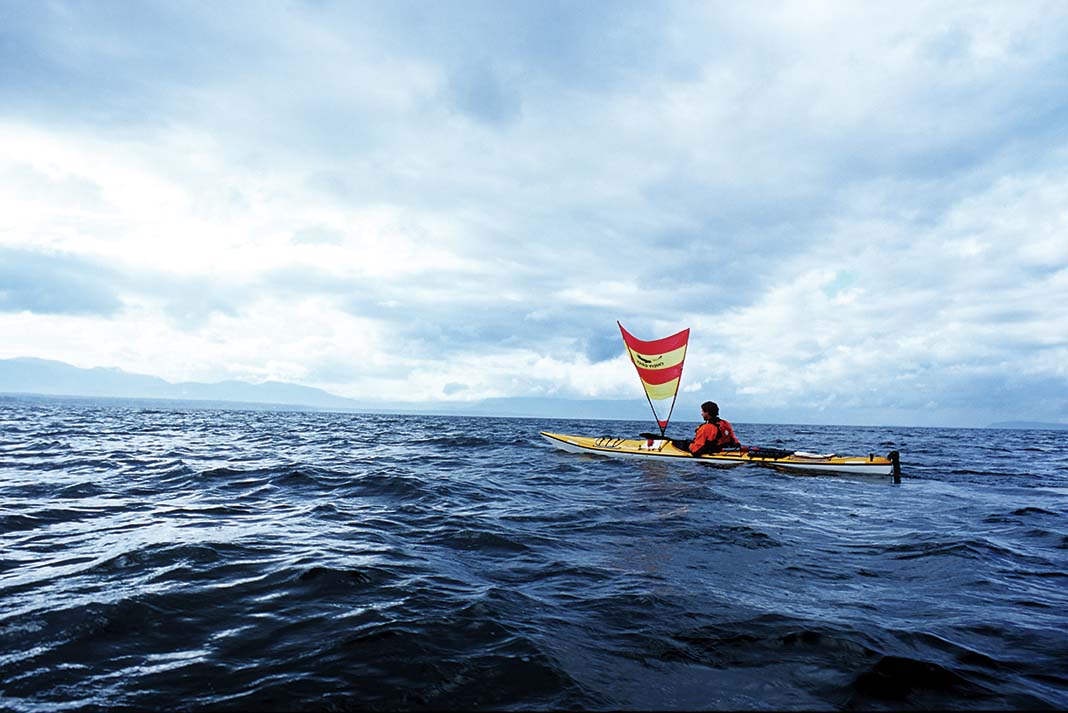
Parafoils
Parafoils are the lightest, simplest and cheapest way to start sailing downwind. A parafoil is a square kite constructed like a parachute. Instead of a rigid frame, sewn cells inflate with air to give the kite its shape. The light nylon foil folds up easily into a small bag the size of a rain jacket that you can stow behind your seat or in a day hatch until the winds pick up.
Parafoils catch a lot of wind and fly lower in the sky than most types of kites, giving them effective forward pulling power. If the winds are strong enough, try adding a heavier line or a weighted tail to fly it even lower. Serious parafoilers may want to modify their bow deck with a system for hands-free flying, including a means of winding in the kite quickly, and a way to thread the string toward the bow to keep it out of the way of the paddle.
Standard size for kayak sailing are 7.5 to 15 square feet. Can be difficult to retrieve quickly on the water.
Advantages: Easily rigged for hands-free operation, lightweight, compact and inexpensive, colorful and fun to fly.
Upwind Sails
An upwind sail rig, while considerably more complex and expensive than a downwind sail or a kite, converts a kayak into a real sailboat that can operate at all points of sail. You can sail a run, broad reach, beam reach, close reach, or close-hauled beat into the wind. Many systems add stability by converting kayaks into catamaran or trimaran rigs with outriggers.
Advantages: Added stability of a leeboard and inflatable outriggers, packs up to stow in hatches or on deck, full upwind capability up to 45 degrees off of upwind, and lighter than a sailboat, faster than a kayak.
7 Tips for Beginning Kayak Sailors
1 If you don’t want to lose it, leash it
You’ll need to be able to drop your paddle to work the sail, and if it’s really cookin’ it will take a long time to turn around and retrieve a lost blade.
2Live by the blade
When you’re playing around with leashes, strings, sheets and such, carry a knife, lest you find yourself upside down in the drink with a kite string wrapped around your neck.
3Hold the line
Reeling 500 feet of string out of the depths is embarrassing when you’re trying to impress your friends with your new sailing toys. Always hang onto the line. Connecting the line to the boat or paddle is asking for trouble. Imagine bailing out and watching your equipment sail away without you.
4Bigger is better
Depending on what type of sailor you are, high winds may be too scary to sail in, or low winds could be boring unless you’ve got a lot of sail acreage. Order up that 16-square-foot parafoil and dare to live dangerously.
5Wear gloves
Fingers get chilled when the wind is blowing and gloves protect your hands when you’re handling narrow kite lines and other rigging.
6Ruddered kayaks finish first
In a ruddered kayak you can steer with your feet while your hands are working the sail. It’s possible to sail a non-ruddered kayak downwind and use a paddle to steer, but this is less efficient and makes it more difficult to sail across the wind.
7Let ‘em laugh
Your friends will guffaw while you’re fiddling with your sail. Kayakers are a stubborn lot and your buddies don’t want you going faster than them. Pay them no heed, Icarus. They won’t be laughing when you pass them effortlessly, riding on the breath of the wind gods.
This article originally appeared in Paddling Magazine Issue 65. Subscribe to Paddling Magazine’s print and digital editions here, or download the Paddling Magazine app and browse the digital archives here.
Add a sail and your kayak is pretty much a superyacht now. | Feature photo: Dave Aharonian


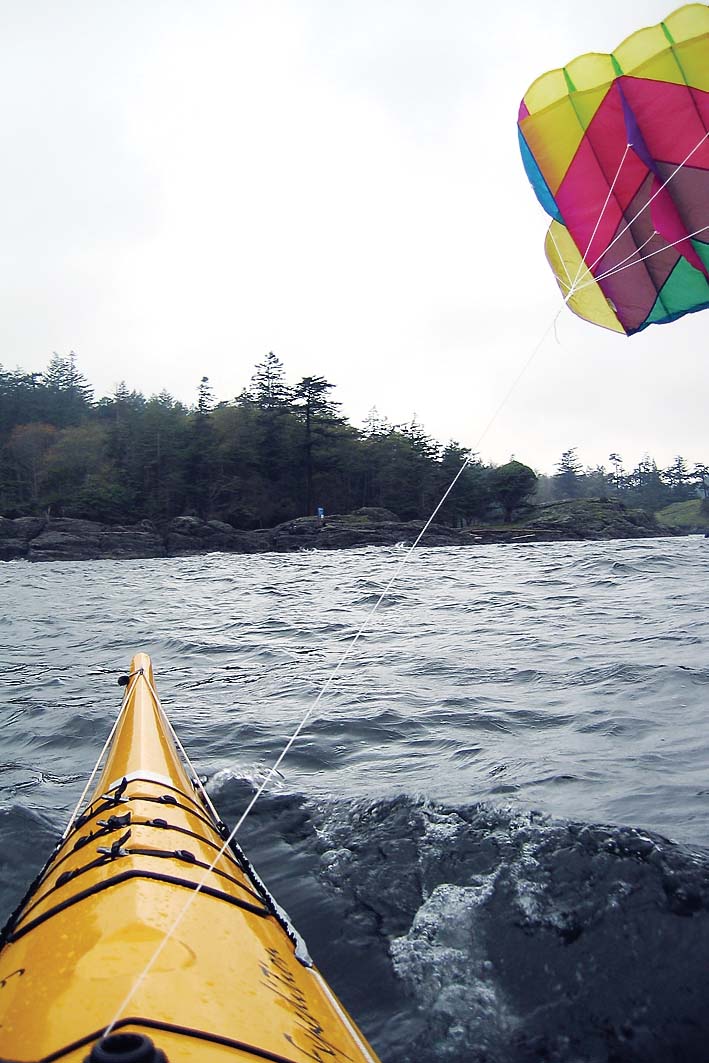
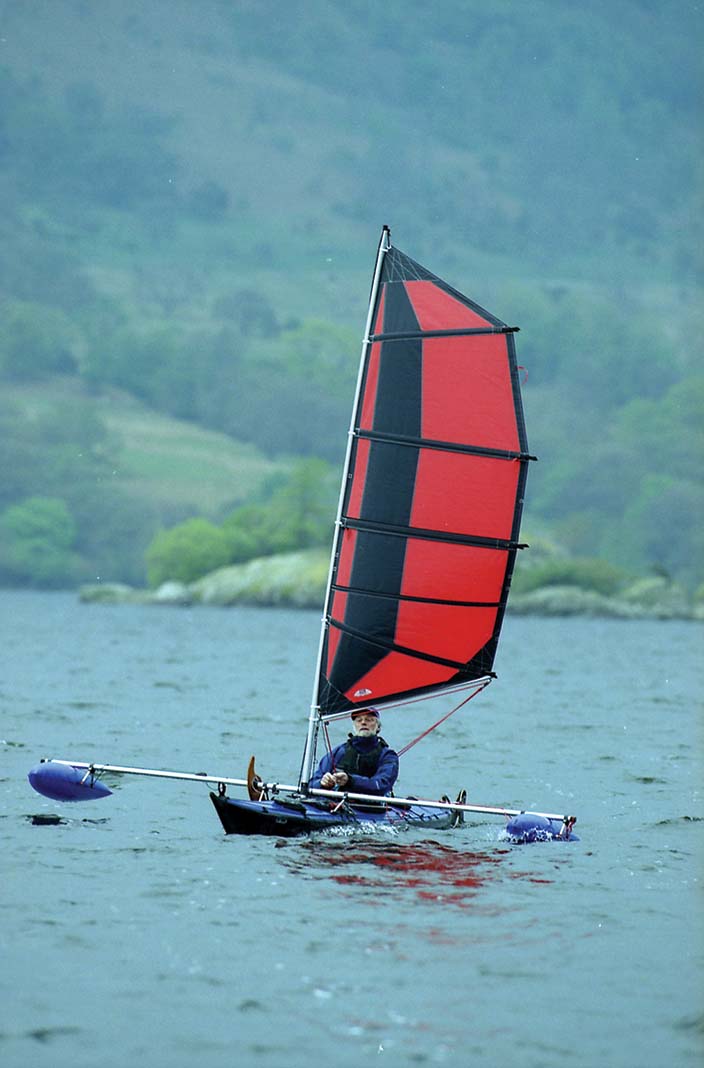
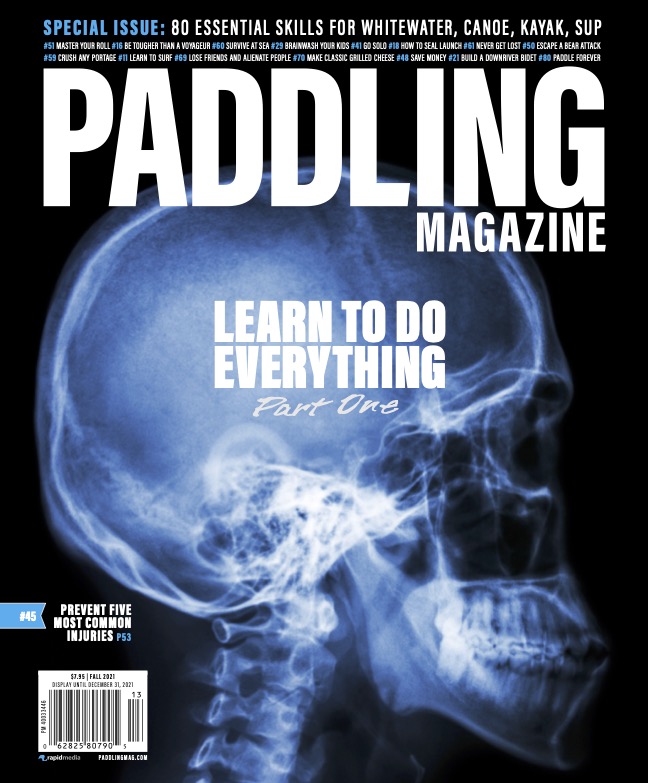

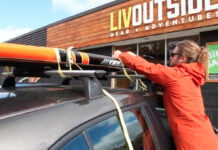

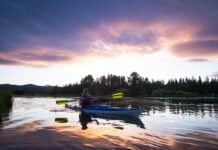
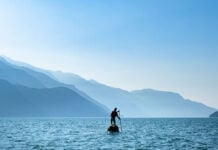

I don’t believe that kayaks are well suited for sailing. If you want to sail buy a sailboat.
I have used a sail ( P&H Code Zero ) and made as much leeway as forward motion. I think you need
a centerboard or keel to keep your kayak on course unless you are just going downwind.
The sail doesn’t make you go faster. I have sailed next to a paddler without sail and they can go just as fast.
Try rolling with a sail in conditions. It simply is not safe.
I disagree. I have paddled from Prince Rupert to the Mexican border in segments mostly around 200 miles, all open ocean exposure. Sails made a huge difference. One can much more easily catch wind waves under sail in a fully loaded boat; in fact, my best day was raising the sail off Brooks Peninsula surfing wind waves nearly 10 miles off shore. I was able to turn on the waves using a Kuvia Sail,(kayaksailor.com). I switched to Flat Earth sails due to being less prone to damage in surf.
Sails add speed, having mixed paddlers with the non-sailor paddlers working harder. I had a 34 mile day in light side wind conditions and could do 3 knots while eating w/o paddling. I am older now, but sails at times saved enough energy for me to have more left in the tank near the end of the paddle, which helped with younger stronger paddlers. It also improves temperature control. I seldom sail w/o paddling, but paddle less vigorously or taking breaks when running hot and more vigorously when running cold.
All my expedition companions now use sails. I had a fifty mile day using a sail for part of the day on a solo trip. The last 12 miles was an open water crossing between islands against a strong outflow driven by a new moon 15 ft. tidal exchange. I was in 20 knot port winds and had to drop the sail under these rough conditions, but I had plenty left in the tank, partially due to energy saving sailing for 4+ hours before the crossing. I would now feel naked on my open coastal multi-day trips without a sail.
Bill